Jackets are the ultimate wardrobe chameleons, effortlessly taking you from a casual coffee date to an important business meeting. Have you ever stood in front of your closet wondering which jacket fits the occasion? The right choice can make or break your entire look, turning a simple outfit into something memorable.
Understanding different jacket types and their purposes
Jackets come in many styles, each designed for specific purposes and occasions. Understanding these differences helps you make better wardrobe choices that match your needs. From lightweight windbreakers to heavy winter coats, the right jacket can protect you from the elements while keeping you stylish.
Casual Jackets for Everyday Wear
Denim jackets, bomber jackets, and hoodies are perfect for casual outings. These styles offer comfort and versatility, making them ideal for running errands or meeting friends. A well-fitted denim jacket, for example, pairs well with both jeans and dresses.
Professional and Formal Options
Blazers and suit jackets elevate your look for work or formal events. A tailored blazer in a neutral color can instantly make an outfit look polished. For business settings, opt for structured jackets that convey professionalism.
Outdoor and Functional Jackets
If you spend time outdoors, consider practical options like parkas, raincoats, or puffer jackets. These are designed with weather resistance in mind, featuring materials like Gore-Tex or down insulation for warmth and protection.
Seasonal Variations
Different seasons call for different jackets. Lightweight linen or cotton jackets work well in summer, while wool or quilted styles are better for winter. Layering also plays a key role in adapting to changing temperatures.
Knowing which jacket suits your activity and environment ensures you stay comfortable and look put-together. Whether you’re dressing for a hike, a business meeting, or a night out, the right jacket makes all the difference.
Choosing the right casual jacket for everyday wear
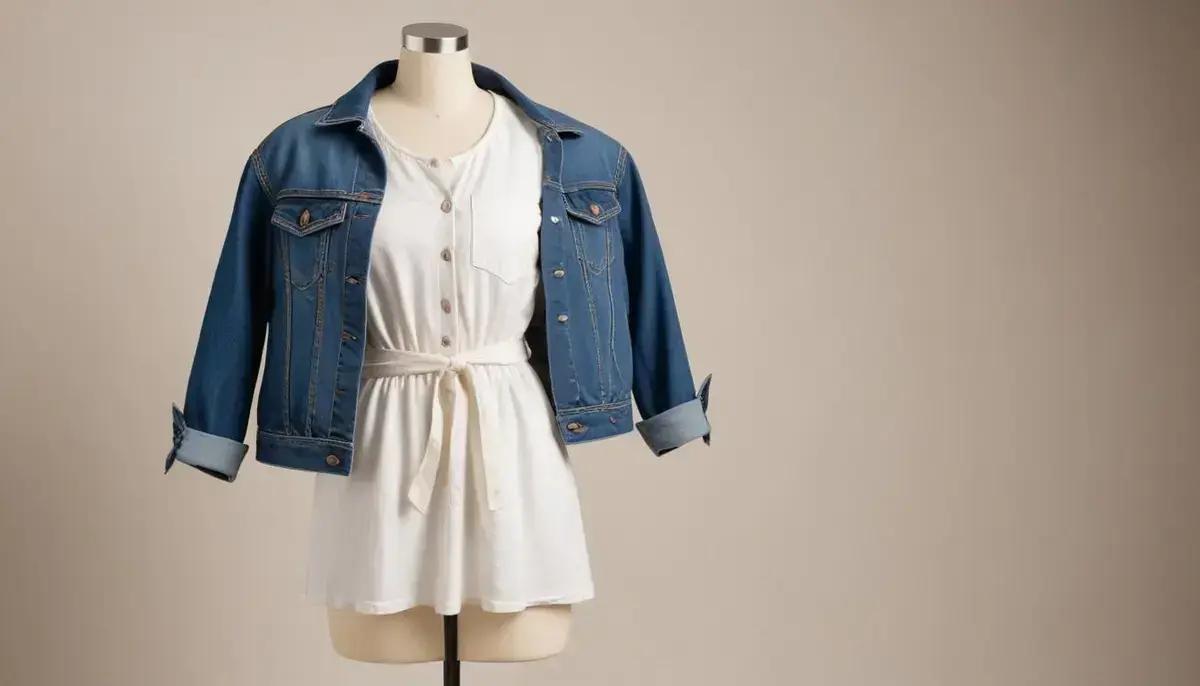
When selecting a casual jacket for daily wear, comfort and versatility should be your top priorities. A great everyday jacket should transition seamlessly from morning errands to evening hangouts while keeping you comfortable all day.
Essential Casual Jacket Styles
The classic denim jacket remains a wardrobe staple, pairing perfectly with everything from t-shirts to summer dresses. Bomber jackets offer a sporty-chic alternative, while utility jackets with multiple pockets provide both style and function.
Material Matters
For year-round wear, consider lightweight cotton or linen blends that breathe well. When temperatures drop, corduroy or slightly heavier cotton twill offers warmth without bulk. Stretch fabrics can add extra comfort for active days.
Color Selection Tips
Neutral tones like navy, olive, or light wash denim offer maximum versatility. If you want to make more of a statement, consider a jacket in a bold color or with interesting texture as your outfit’s focal point.
Fit Considerations
Your everyday jacket should allow comfortable movement – not too tight across the shoulders when layered over a sweater, nor so loose it looks sloppy. Look for adjustable features like drawstrings or elastic cuffs that help customize the fit.
Remember to consider your local climate and typical daily activities. A water-resistant finish might be crucial if you walk everywhere, while those in warmer climates might prioritize breathability above all else.
Business casual jackets that work in professional settings
Business casual jackets strike the perfect balance between professional polish and everyday comfort. The key is finding styles that look put-together without being too formal, allowing you to maintain a professional image while feeling at ease.
Top Business Casual Jacket Choices
Unstructured blazers in wool or cotton blends work beautifully, offering a softer alternative to traditional suit jackets. Sport coats with subtle patterns or textured fabrics also transition well from office to after-work engagements.
Color and Fabric Guidelines
Stick to neutral tones like navy, charcoal, or camel for maximum versatility. Performance fabrics with stretch and wrinkle resistance are ideal for all-day wear. In warmer months, consider lightweight linen or cotton-linen blends that breathe well.
Layering Strategies
Your business casual jacket should layer smoothly over dress shirts, polos, or thin sweaters. Pay attention to sleeve length – jacket sleeves should reveal about half an inch of your shirt cuff for a polished look.
Fit Essentials
Shoulder seams should align perfectly with your natural shoulder line. The jacket should button comfortably without pulling, and the length should cover your seat. Consider getting your jacket tailored for that perfect custom fit.
Remember, business casual varies by workplace – observe what senior colleagues wear and aim for slightly more polished versions of those styles when selecting your jackets.
Formal jackets for special events and ceremonies
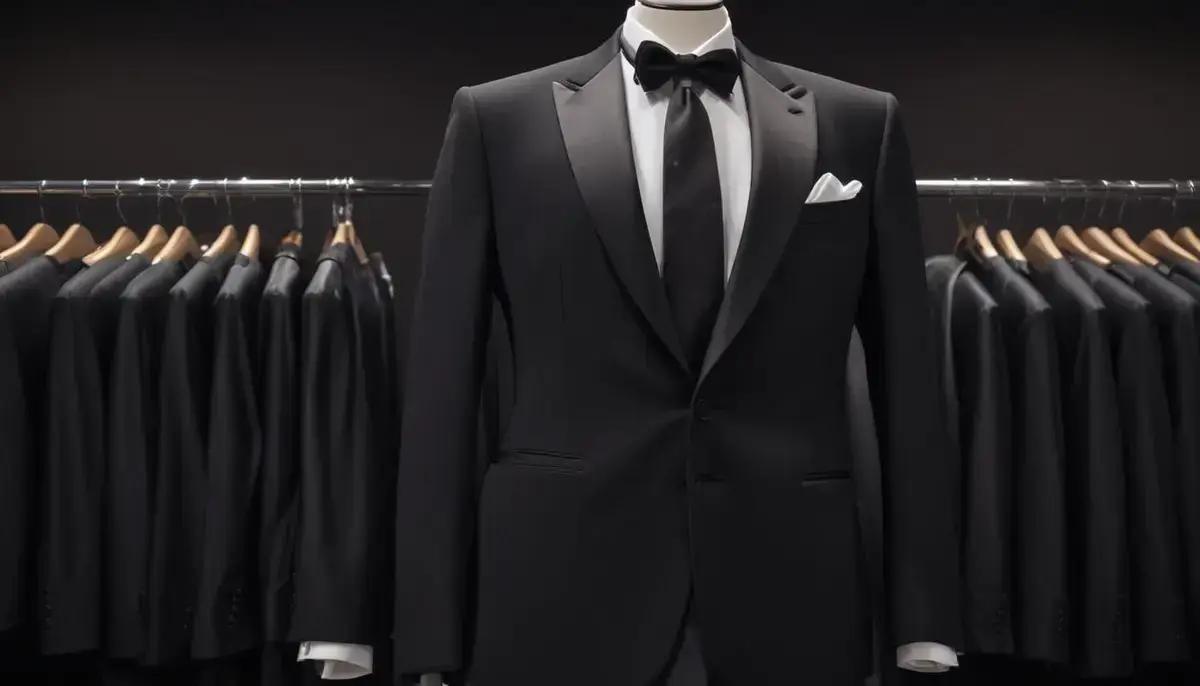
When dressing for formal occasions, your jacket makes the first impression. Whether it’s a wedding, gala, or black-tie event, choosing the right formal jacket ensures you look polished and appropriate for the setting.
Classic Formal Jacket Styles
The tuxedo jacket remains the gold standard for black-tie events, featuring satin lapels and a single button. For daytime formal events, a morning coat with its distinctive tailed design offers traditional elegance. The stroller jacket provides a smart alternative for less formal daytime occasions.
Fabric and Construction Details
Look for high-quality wool or wool-silk blends in formal jackets. Peak lapels add formality, while notch lapels offer slightly more versatility. Pay attention to the jacket’s lining – bemberg or silk linings indicate better quality and comfort.
Color and Pattern Guidelines
Black is essential for evening wear, while dark navy or charcoal work for many formal settings. Avoid patterns for most formal occasions – solid colors project the most sophistication. For summer weddings, consider a white dinner jacket in tropical-weight wool.
Proper Fit Essentials
A formal jacket should fit impeccably – shoulders should lie flat with no puckering, sleeves must show the correct amount of shirt cuff (about 1/2 inch), and the jacket length should cover your seat completely. Consider investing in professional tailoring for your formal jackets.
Remember to coordinate your formal jacket with appropriate trousers, shirts, and accessories to complete your polished look for any special occasion.
Seasonal considerations when selecting jackets
Choosing the right jacket for each season requires understanding how weather conditions affect your comfort and style. The perfect seasonal jacket protects you from the elements while complementing your wardrobe throughout the year.
Spring Jacket Essentials
Lightweight options like trench coats, windbreakers, and denim jackets work well for spring’s unpredictable weather. Look for water-resistant fabrics that can handle April showers while providing breathability as temperatures rise. Layering-friendly designs allow easy adaptation to changing conditions.
Summer Jacket Solutions
For summer evenings and cooler climates, opt for ultra-light materials like linen or cotton blends. Unlined blazers and mesh bomber jackets provide coverage without overheating. Light colors reflect sunlight while darker shades work for evening events when temperatures drop slightly.
Fall Transition Pieces
As leaves change, consider medium-weight jackets like leather moto styles, waxed cotton, or quilted designs. These provide warmth during crisp autumn days while remaining versatile enough for temperature fluctuations. Earth tones and richer colors complement the season’s palette.
Winter Jacket Must-Haves
When temperatures plummet, prioritize insulation with down-filled parkas, wool peacoats, or technical winter shells. Look for features like storm flaps, adjustable cuffs, and high collars to block wind and snow. Darker colors hide winter grime while bright accents increase visibility in low light.
Remember that climate varies by location – what works for mild winters might not suffice in harsher conditions. Always consider your local weather patterns when selecting seasonal jackets.
Color coordination and styling tips for jackets
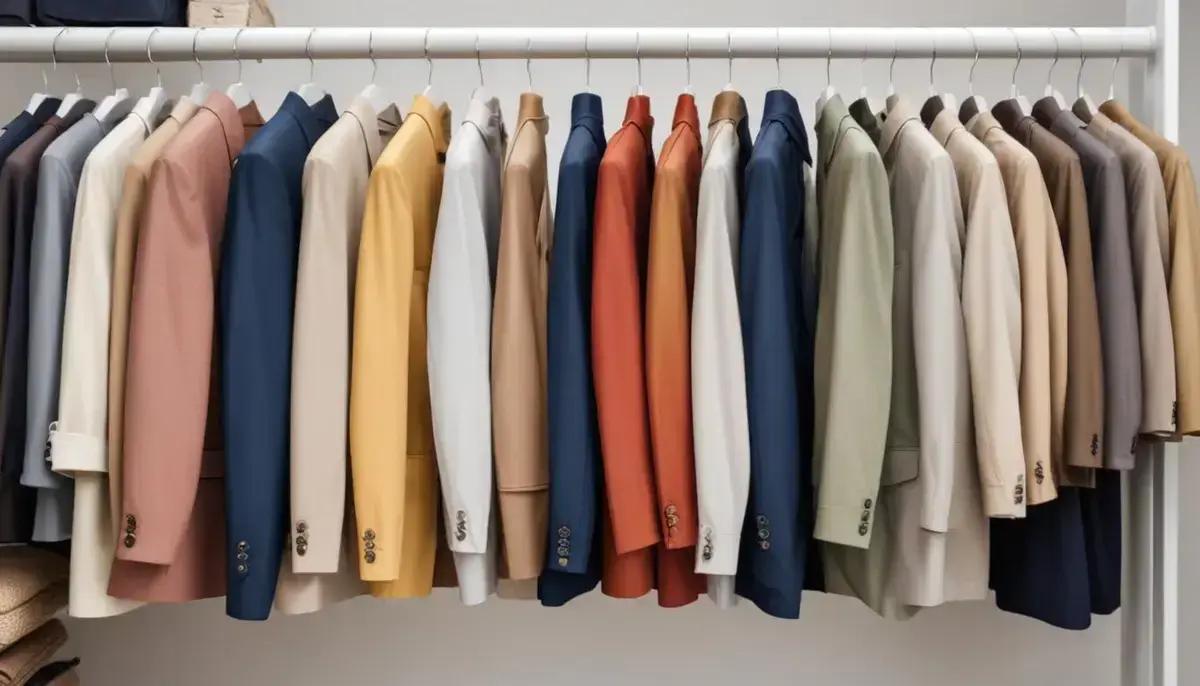
Mastering color coordination with your jackets can elevate your entire outfit from ordinary to exceptional. The right color combinations create visual harmony while expressing your personal style.
Neutral Foundation Pieces
Start with versatile neutral jackets in black, navy, gray, or camel that pair effortlessly with nearly any color in your wardrobe. These foundational pieces allow for endless mixing and matching possibilities while maintaining a polished look.
Complementary Color Schemes
For bolder jackets, apply basic color theory – pair warm tones (reds, oranges) with other warm colors, and cool tones (blues, greens) with cool colors. Analogous colors (those next to each other on the color wheel) create harmonious combinations, while complementary colors (opposites) make vibrant statements.
Pattern Mixing Techniques
When wearing patterned jackets, keep other elements simple. A plaid or houndstooth jacket pairs best with solid-colored shirts and trousers. For subtle pattern mixing, vary the scale – pair a large-check jacket with a pinstripe shirt, for example.
Seasonal Color Considerations
Lighter pastels work beautifully in spring, while rich jewel tones shine in fall and winter. Summer calls for crisp whites and nautical-inspired color blocking. Don’t be afraid to break ‘rules’ – a bright red jacket can energize a gray winter day.
Remember that color affects perception – darker jackets appear more formal and slimming, while lighter colors project approachability. Use color strategically to create your desired impression.
Fabric choices that make a difference in appearance
The fabric of your jacket significantly impacts both its appearance and performance. Different materials create distinct looks, from casual ruggedness to refined elegance, while affecting comfort and durability.
Natural Fibers for Classic Style
Wool remains the gold standard for formal and business jackets, offering excellent drape and temperature regulation. Cotton provides breathability for casual styles, while linen delivers a relaxed, textured look perfect for warm weather. Leather develops a unique patina over time, adding character to your outerwear.
Performance Fabrics for Modern Needs
Technical blends incorporating polyester, nylon, or elastane offer wrinkle resistance, stretch, and water repellency. These high-tech fabrics maintain their shape through active days while providing comfort and easy care. Look for innovative weaves that mimic natural fabrics’ appearance with enhanced functionality.
Texture and Visual Interest
Tweed’s nubby surface conveys tradition and warmth, while smooth gabardine projects sleek professionalism. Corduroy’s ridges add dimension to casual jackets, and velvet brings luxurious depth to evening wear. Consider how fabric texture interacts with your overall look – smooth fabrics create cleaner lines, while textured materials add visual weight.
Seasonal Fabric Considerations
Heavier wools and quilted fabrics provide winter warmth, while tropical-weight wools and cotton-linen blends keep you cool in summer. Transitional seasons call for medium-weight materials like flannel or soft-shell fabrics that adapt to changing temperatures.
Remember that fabric quality affects longevity – investing in better materials often means your jacket will look good longer. Check the fabric composition label and feel the material before purchasing to ensure it meets your needs.
Fit guidelines for finding your perfect jacket size
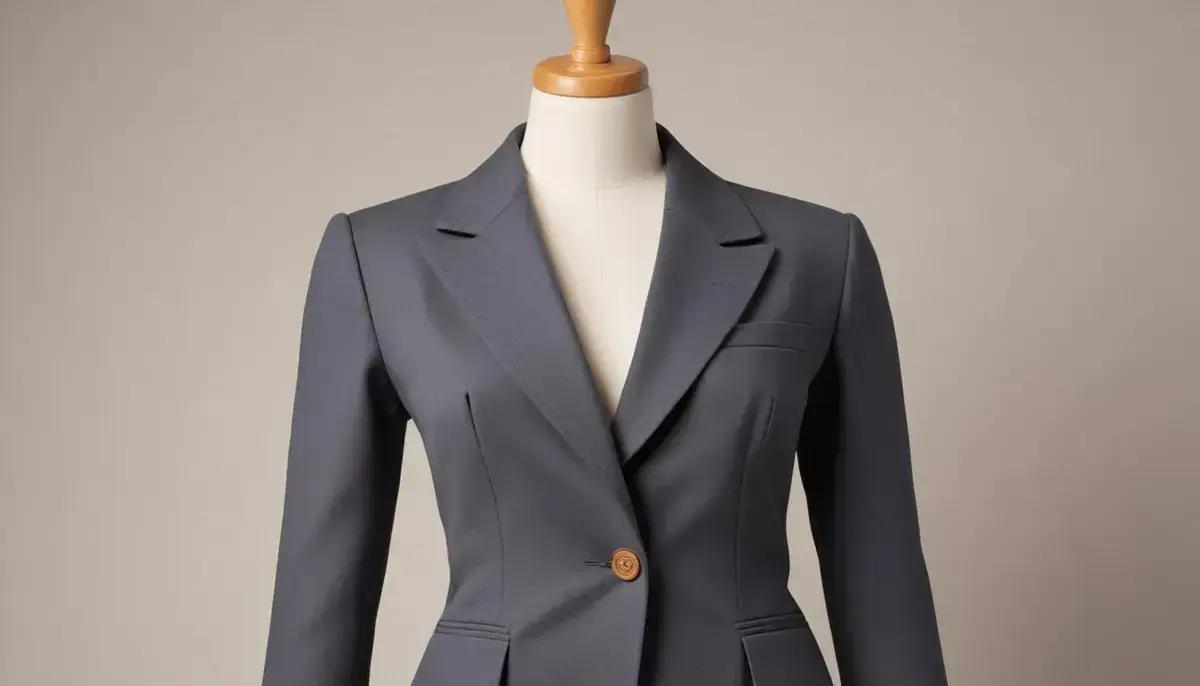
Finding your perfect jacket fit requires understanding key measurement points and how different styles should contour to your body. A well-fitted jacket enhances your silhouette while allowing comfortable movement.
Shoulder Fit Fundamentals
The shoulder seam should align exactly with your natural shoulder bone. Too wide creates a sloppy look, while too narrow restricts movement. For structured jackets like blazers, the shoulders should lie flat without puckering.
Chest and Torso Considerations
When buttoned, the jacket should feel snug but not tight across your chest – you should be able to comfortably slide your hand between the fabric and your chest. The jacket waist should follow your natural shape without pulling or excess fabric.
Sleeve Length Perfection
Jacket sleeves should end at your wrist bone, showing about 1/2 inch of shirt cuff when your arms are at your sides. This creates a polished, proportional look while maintaining functionality.
Jacket Length Guidelines
For most styles, the hem should cover your seat completely. Sport coats and blazers typically fall to mid-crotch, while casual jackets may be slightly shorter. Long coats should hit mid-thigh to knee-length depending on style.
Movement Testing
Always test range of motion – raise your arms, hug yourself, and sit down while wearing the jacket. There should be no tightness or fabric pulling across the back when moving. The collar should stay flush with your neck without gaping.
Remember that fit varies by jacket type – a motorcycle jacket fits snugger than an overcoat. When in doubt, consult a professional tailor for adjustments to achieve your ideal fit.
Versatile jacket styles that transition between occasions
Certain jacket styles possess the chameleon-like ability to adapt to different settings with just a few styling tweaks. These versatile pieces maximize your wardrobe’s potential while minimizing closet space.
The Modern Blazer
An unstructured blazer in navy or gray transitions effortlessly from office to evening. Dress it up with tailored trousers and loafers for work, then pair with dark jeans and Chelsea boots for dinner. Look for performance fabrics that resist wrinkles for all-day wear.
Bomber Jacket Magic
Today’s bomber jackets come in sophisticated materials like suede or technical fabrics that elevate them beyond casual wear. Layer over a button-down for smart-casual events or with a plain tee for weekend errands. Neutral colors increase versatility.
Leather Jacket Flexibility
A well-cut leather jacket works with nearly everything in your wardrobe. Wear it over a dress for edgy femininity or with chinos and a sweater for refined casual. The key is choosing a classic silhouette without excessive detailing.
Trench Coat Transformations
The timeless trench coat dresses up or down beautifully. Belt it over a suit for business travel, or leave open over jeans and a turtleneck for weekend sophistication. Choose a mid-weight fabric that works across seasons.
Denim Jacket Adaptability
A dark wash denim jacket in a tailored cut serves as the ultimate transitional piece. Layer it under a wool coat in winter or over sundresses in summer. The right denim jacket works for dates, casual Fridays, and weekend adventures alike.
When selecting versatile jackets, prioritize quality construction and classic silhouettes over trendy details. These investment pieces will serve you for years across countless occasions.
Care and maintenance tips to keep jackets looking fresh

Proper jacket care extends the life of your investment pieces while maintaining their like-new appearance. Different materials require specific maintenance approaches to preserve their quality and functionality.
Cleaning Fundamentals
Always check care labels first – wool jackets typically need professional dry cleaning, while many synthetic blends can be gently machine washed. Spot clean stains immediately with appropriate cleaners for the fabric type. For leather, use pH-balanced cleaners specifically formulated for hides.
Storage Solutions
Store jackets on wide, padded hangers to maintain shoulder shape. Allow jackets to air out after wearing before returning to closets. Use breathable garment bags for long-term storage, avoiding plastic which can trap moisture. Cedar blocks help prevent moths naturally.
Weather Protection
Apply water-repellent treatments to appropriate fabrics before each season. For leather, use conditioner to prevent cracking and maintain suppleness. Always let wet jackets dry completely at room temperature – never use direct heat sources which can damage fibers.
Wrinkle Removal
Steam is gentler than ironing for most jackets. Use a handheld steamer at medium heat, keeping it moving to avoid moisture buildup. For pressing, always use a pressing cloth and the appropriate temperature for the fabric. Hang jackets properly after wearing to let wrinkles fall out naturally.
Professional Maintenance
Consider annual professional cleaning for prized jackets. A good tailor can replace worn linings, tighten loose buttons, and refresh shape. For leather jackets, professional conditioning and color restoration can add years of wear.
Regular maintenance preserves your jackets’ appearance and performance, ensuring they remain wardrobe staples season after season.
Budget-friendly options without compromising quality
Finding quality jackets on a budget requires smart shopping strategies and knowing where to compromise without sacrificing durability or style. With careful consideration, you can build a versatile jacket collection without overspending.
Material Alternatives
Look for blended fabrics that mimic premium materials at lower costs – polyester-wool blends offer wool’s appearance with easier care, while faux leather provides the look of real leather at a fraction of the price. Focus on fabric weight and weave quality rather than pure material composition.
Off-Season Shopping
Purchase winter jackets in spring and summer styles in fall for significant discounts. Department stores typically rotate inventory in January and July, offering the best clearance deals. Sign up for store newsletters to get early sale notifications.
Outlet and Discount Retailers
Check outlet stores for previous season styles from quality brands at 30-70% off retail. Discount retailers like TJ Maxx and Nordstrom Rack often carry designer overstock. Always inspect stitching, lining, and hardware for quality before purchasing.
Secondhand Treasures
Thrift stores, consignment shops, and online resale platforms offer gently used jackets at steep discounts. Focus on classic styles that never go out of fashion. Leather jackets in particular age well and can be found in excellent pre-owned condition.
Versatility Over Quantity
Invest in a few neutral, well-constructed jackets that mix and match with your existing wardrobe rather than multiple trendy pieces. A single quality jacket that works for multiple occasions provides better value than several cheap alternatives.
Remember that proper care extends the life of budget jackets, making them smarter long-term investments than disposable fast fashion options.
Investment pieces worth adding to your wardrobe
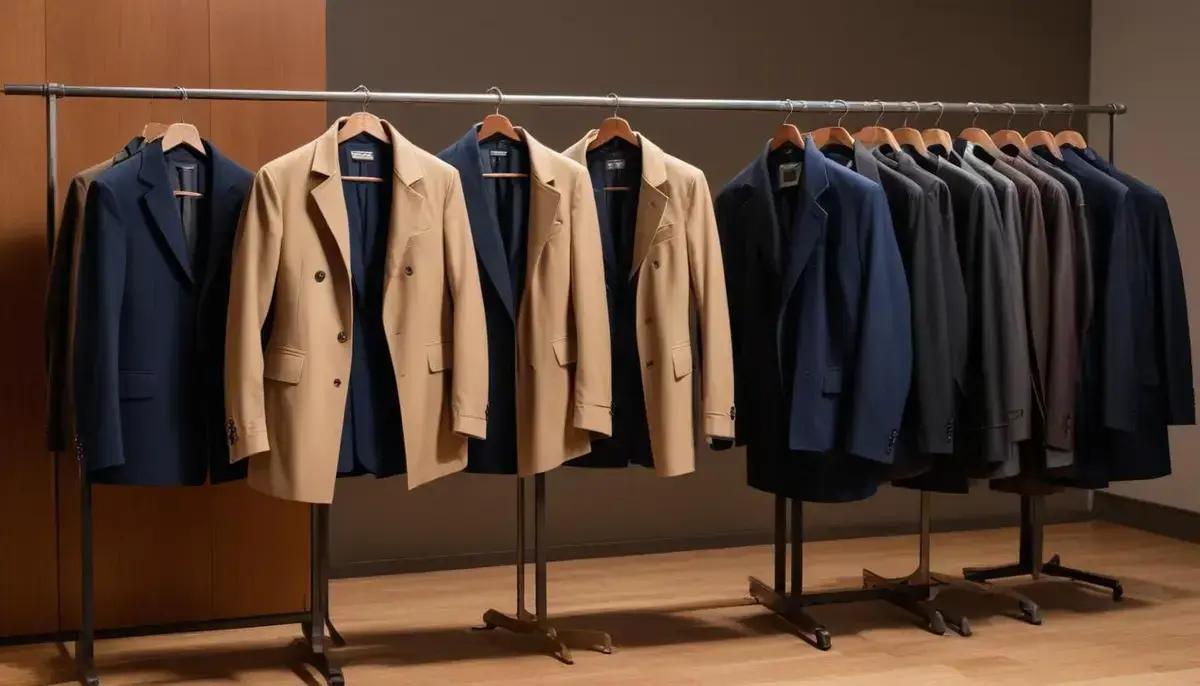
Certain jacket investments pay dividends for years, becoming wardrobe staples that outlast trends. These pieces combine timeless design with exceptional craftsmanship for long-term value.
The Perfect Tailored Blazer
A well-constructed wool blazer in navy or charcoal serves countless occasions. Look for full-canvas construction, horn buttons, and quality lining. These details ensure durability and a superior drape that synthetic blends can’t match.
Heritage Trench Coat
An authentic cotton gabardine trench in a classic length offers decades of wear. The best feature storm flaps, gun flaps, and quality hardware. Neutral colors like stone or khaki maintain versatility across seasons and styles.
Premium Leather Jacket
Top-grain leather in a simple motorcycle or bomber style develops character with age. Look for vegetable-tanned hides and sturdy stitching. A black or brown leather jacket becomes more attractive with proper care and wear.
Technical Performance Coat
Invest in a high-performance winter coat with features like down insulation, waterproof membranes, and reinforced stress points. These technical pieces provide reliable protection in harsh conditions year after year.
Evening Tailcoat
For formal occasions, a properly fitted tailcoat or tuxedo jacket maintains its elegance indefinitely. Classic black with satin lapels never dates, making it worth the investment for frequent formal wearers.
When evaluating investment jackets, consider cost-per-wear rather than just purchase price. Quality pieces worn regularly often prove more economical than replacing cheap alternatives annually.
Building Your Perfect Jacket Collection
From casual weekends to formal events, the right jackets can elevate your style for every occasion. We’ve explored how to select pieces that combine quality, versatility and perfect fit – whether you’re shopping on a budget or investing in lifetime wardrobe staples.
Remember that great style isn’t about having the most jackets, but rather the right ones. A few well-chosen pieces that you love wearing will serve you better than a closet full of impulse purchases. Proper care and maintenance will keep your jackets looking their best season after season.
Your perfect jacket collection should reflect your personal style while meeting your practical needs. Start with versatile basics, then add special pieces as your lifestyle demands. With the knowledge you’ve gained, you’re now equipped to make smart choices that will enhance your wardrobe for years to come.







